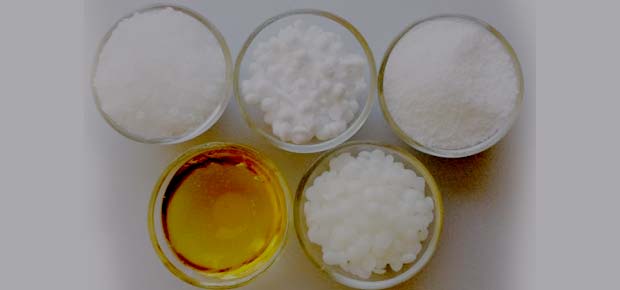Emulsifiers are chemicals that are used in fabric softeners along with conditioning agents to make the solution stable. Without emulsifiers the softener liquid will separate into two parts / phases. Also known as a surfactant from a surface-active material, emulsifiers are used to prepare emulsions, such as creams or lotions.
Chemically, emulsifiers are functional ingredients that have both lipophilic and hydrophilic properties at once as their molecular structure has both hydrophilic as well as hydrophobic part. An emulsion is a dispersion of one non-miscible liquid droplets into another - i.e., water and oil. Without an emulsifier, the two liquids would separate quickly.
The emulsifier is absorbed in the interface between the two liquids, thereby forming a film between both products. Because of its structure, the polar part of an emulsifier molecule has an affinity with water, while the non-polar part (fatty chain) tends to be attracted to the fatty phase. The emulsifier forces one of the liquid to separate into drops, suspended and dispersed within the other liquid. As these droplets are guarded and protected by the emulsifier molecules, which surround them, they are kept isolated from each other, which ensures that two substances do not separate but are kept in the stable mixture.

Macro-emulsions are creamy dispersions of water and oil that are similar to hand lotions or hair conditioners. The molecules of an emulsifier surround the hydrophobic oil or silicone droplets and enable them to be dispersed in water. A micro-emulsion is similar to it chemically, however it creates oil particles, which are so tiny that light will pass around them. Therefore, micro-emulsions are characterized by their clarity and transparency as opposed to being milky white in color. Another advantage of micro-emulsions is that the silicone particles, which are so tiny penetrate into the fibers, while the macro emulsions only deposit on the surface of fiber. The third type of emulsifiers, i.e. emulsions polymers, form dispersions, which look similar to a macro-emulsion in appearance. This system do not use true emulsifiers to suspend and dissolve the oil phase, instead, it produces a stabilized web of molecules, which suspend the tiny droplets of silicone.
The emulsifying system for use in softeners should be chosen carefully to ensure an adequate level of deposition on the fabric. A blend of non-ionic emulsifiers (no charge) and cationic emulsifiers (positive charge) are generally used. Anionic surfactants (negative charge) are used rarely because the fabric conditioning agents have a positive charge that tends to destabilize an anionic emulsion.
Advantages
If you have decided to make soap at home, you will need soap making supplies in the form of raw materials, soap making equipment & tools ...
Read More
Someone has rightly said that clothes are not just clothes. They form an integral part of a person's personality and tell a lot about their nature and...
Read MoreCleansing products play an important role in the daily lives of people.
Both soaps and detergents are cleansing products that we frequently use in our
Soap is designed as a product to be used once and then flushed down the drain...